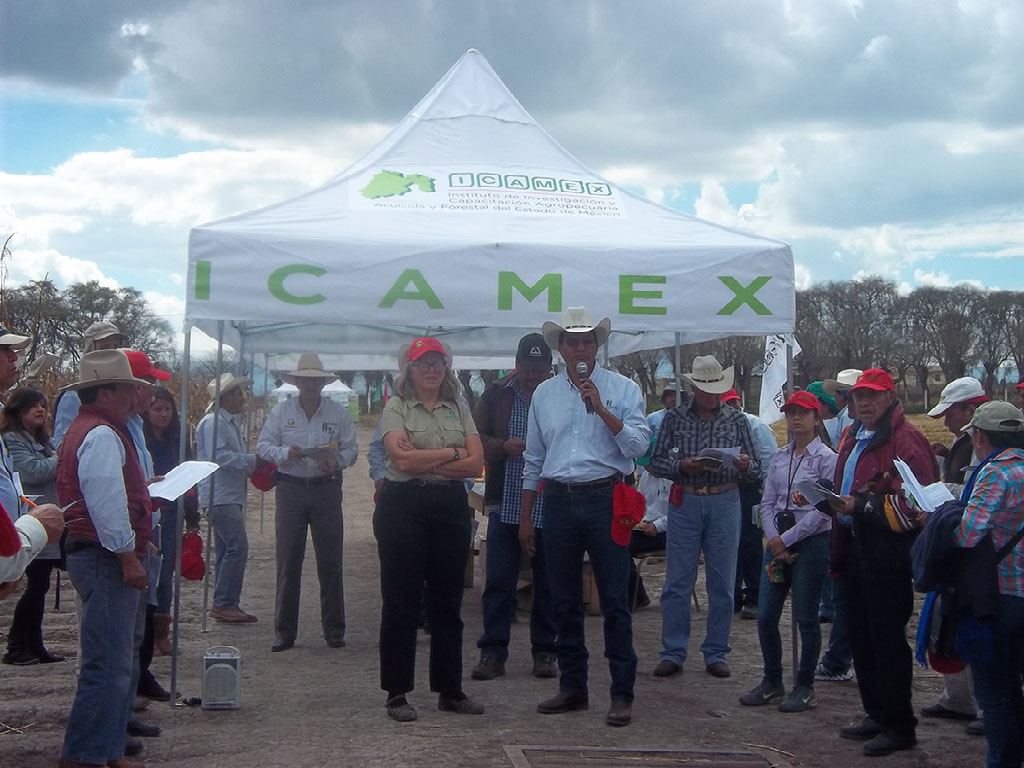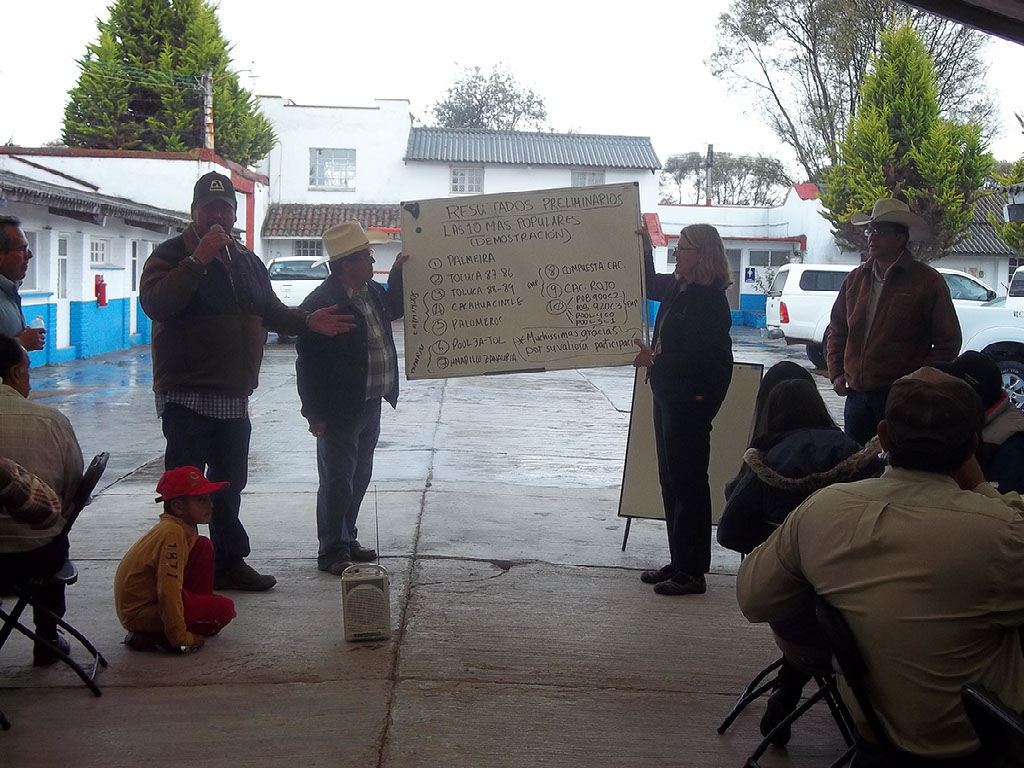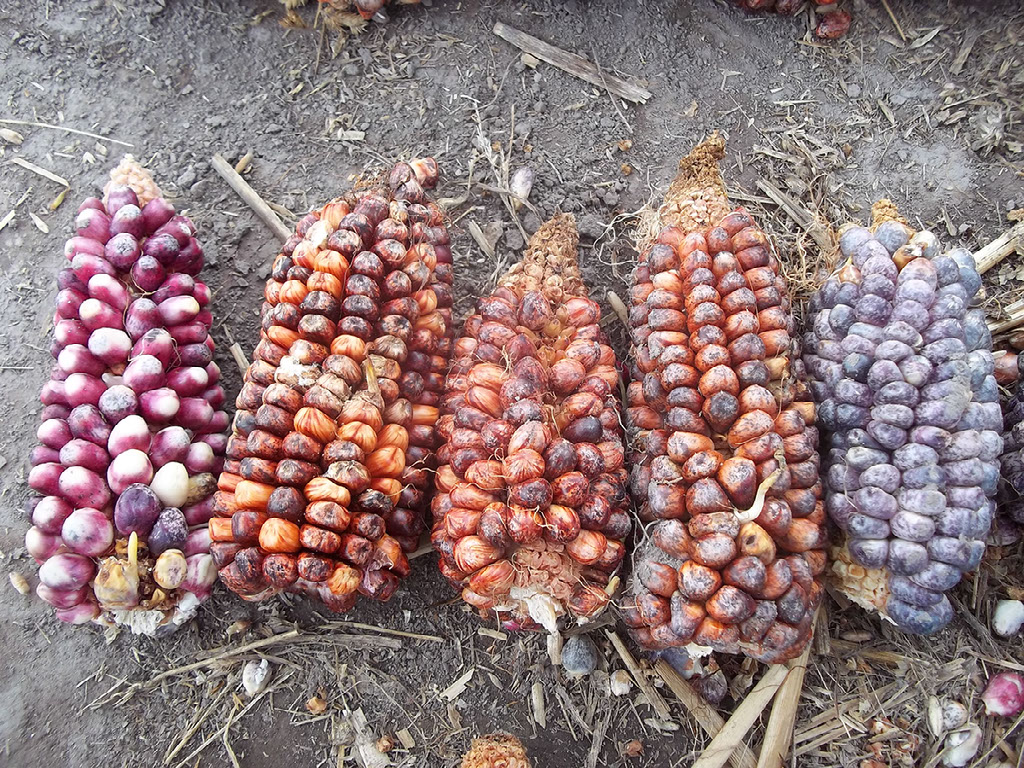Toluca Field Day 2014 "The Cimmyt maize germplasm bank is not a museum"
At a carefully organized field day on 21 November at CIMMYT’s Toluca, Mexico, experiment station, the Maize Germplasm Bank put on display for about 150 visitors regeneration plots of more than 100 South American highland maize varieties that had never before been successfully regenerated in Mexico.
A key aim was to raise awareness among the visitors, who included local farmers and leaders of agricultural organizations from the state of Mexico, maize breeders and seed company representatives, about the Bank collection’s diversity and potential as a source of useful traits, according to Denise Costich, head of CIMMYT’s Maize Germplasm Bank. “The Bank is not a museum,” said Costich to the group. “It is crucial that the seed get used – both here in Mexico, the center of the origin of maize, and all over the world.”

Bank seed collections are packed at 6-8 percent moisture and stored at 0 degrees Centigrade or colder to ensure longevity. But the seed must continuously be monitored for viability – in essence, whether it can germinate or not. When a significant portion of the seed in a collection loses that ability, the remaining, healthy seed must be sown again and harvested to replenish the collection. This “regeneration” follows strict protocols to preserve a collection’s original diversity. “It is also challenging,” said Costich, “because maize varieties are highly adapted to the local conditions in which they evolved. Thus, seed of a highland maize variety must be regenerated at a high-altitude location.”
Situated at 19 degrees North latitude and 2,640 meters above sea level, the Toluca station is among the best Mexican sites to grow the South American maize, which on the field day included varieties native to Argentina, Bolivia and Peru. Other regenerated maize varieties on display had been developed at Toluca in the 1980s and 90s. In all, the regenerated maize ranged in type from popcorn to cacahuacintle, a Mexican landrace used in a popular pork stew called pozole.
Funded by the Global Crop Diversity Trust and the State of Mexico’s agricultural research institute, ICAMEX, the field day began with welcome messages from Pedro Mijares Oviedo, ICAMEX Director General, and Fernando Delgado, Toluca station superintendent.
Visitors received a catalog of high-altitude and newly-available Toluca-developed maize varieties and a survey regarding which seed collections caught their interest.

The Maize Germplasm Bank holds 28,000 maize accessions, 12,000 of which come from Mexico and the majority of which are “criollos,” native landrace varieties, explained Costich. Once the participants had completed the surveys they returned to the Toluca experimental station for lunch while the survey results were tallied. Overall, participants preferred the varieties of Palmeira, Toluca 87-86, Toluca 88- 89, Cacahuacintle, palomeros, Pool 3A-Tol and Amarillo Zanahoria. The Maize Germplasm Bank will be in touch with the survey participants to arrange seed distribution and future collaborative research.
